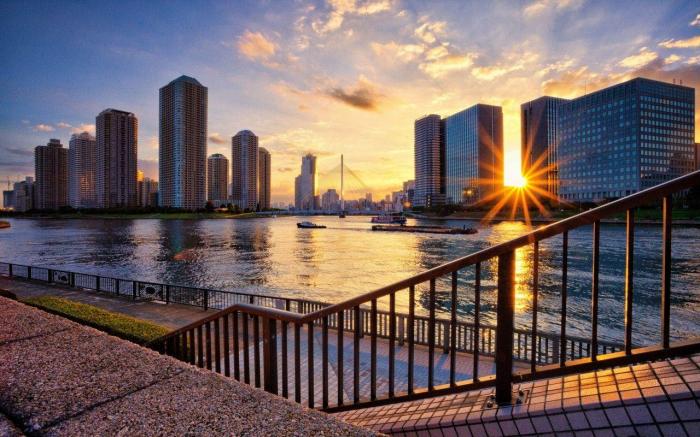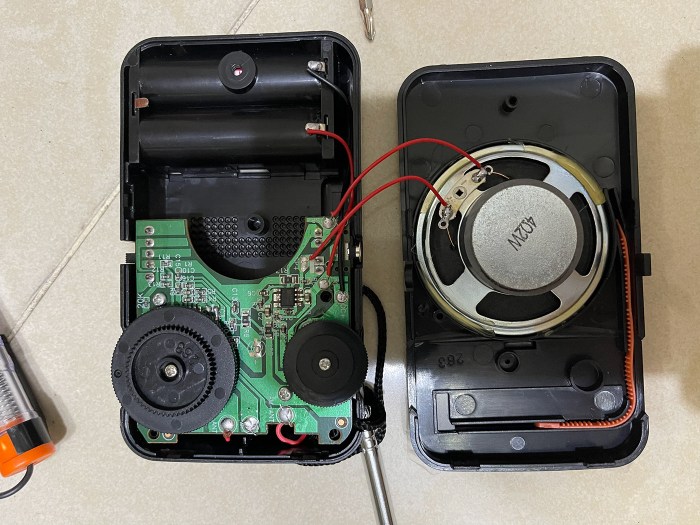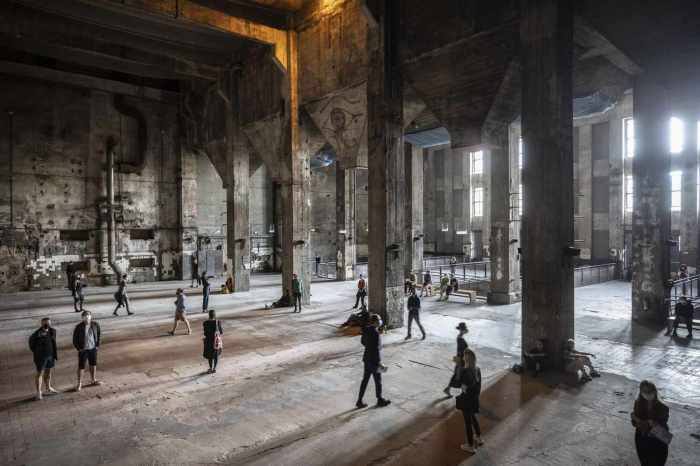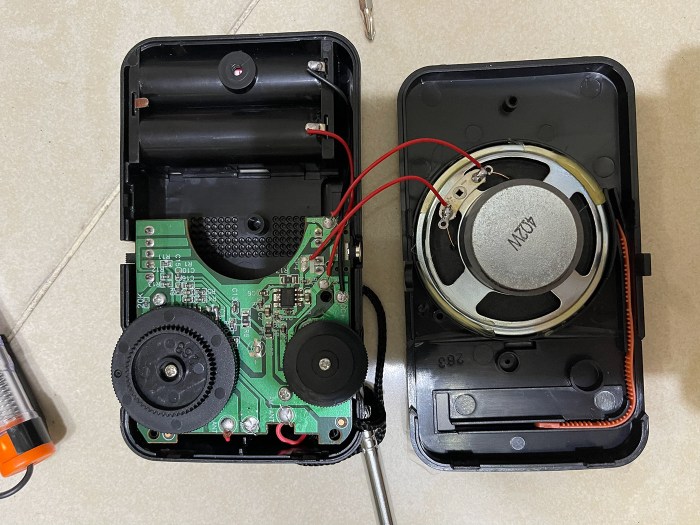Daytime raves in Berlin are a vibrant and evolving phenomenon. From their origins as a unique expression of Berlin’s creative spirit to the bustling scenes of today, these events offer a different energy than traditional nighttime raves. Imagine sun-drenched parks and public spaces transformed into temporary dance floors, where music, art, and community intertwine in a unique blend of urban celebration.
This exploration delves into the history, locations, music, community, safety, and impact of these unique daytime gatherings.
This post will cover the key aspects of these events, including the evolution of their unique culture, the venues that host them, the music that fuels them, the community that gathers, and the safety measures that are in place. We’ll also look at the economic and environmental impact, as well as the challenges these events face. So, let’s dive into the world of Berlin’s daytime raves!
Introduction to Daytime Raves in Berlin

Berlin, a city renowned for its vibrant nightlife, has also embraced a unique and evolving form of daytime rave culture. This phenomenon, distinct from traditional nighttime raves, has carved a niche for itself, characterized by specific aesthetics, atmosphere, and social dynamics. The evolution of these events reflects Berlin’s broader cultural identity, blending creativity, community, and a unique take on electronic music.Daytime raves in Berlin differ significantly from their nighttime counterparts.
While nighttime raves often focus on intense, late-night energy and a more clandestine atmosphere, daytime raves are typically more inclusive and accessible, emphasizing a relaxed atmosphere and a sense of community. They often take place in parks, open spaces, or designated locations, allowing for a more open and social experience. This difference in environment and energy contributes to a distinct experience for participants.
History of Daytime Rave Culture in Berlin
Daytime raves in Berlin emerged in the early 2000s, growing out of the already established rave scene. This shift saw a conscious effort to create events that were less focused on the late-night, clandestine nature of traditional raves. The move to daytime reflected a desire for inclusivity and accessibility, making these events more welcoming to a wider range of people.
This evolution saw a blend of factors, including the rise of electronic music festivals and the increasing availability of outdoor spaces for such events.
Key Differences Between Daytime and Nighttime Raves
The core difference lies in the timing and atmosphere. Daytime raves prioritize a more relaxed, community-oriented experience, often incorporating elements of social interaction and visual arts. Nighttime raves, in contrast, often emphasize a more intense and concentrated musical experience, with a heightened sense of anonymity. Additionally, daytime events often have a more family-friendly, open-air aspect, whereas nighttime raves often operate in clandestine settings.
Notable Daytime Rave Events in Berlin
Numerous daytime raves have left their mark on Berlin’s cultural landscape. One example is the series of events held in Tempelhofer Feld, known for their vibrant atmosphere and diverse musical line-ups. These events often attracted thousands of attendees, showcasing the appeal and reach of daytime rave culture. Similarly, events organized in other parks and open spaces across the city have contributed significantly to the evolution of this unique subculture.
Timeline of Significant Moments in Daytime Rave History
- 2005-2008: Initial emergence of daytime events, experimenting with formats and locations.
- 2009-2012: Increased popularity and experimentation with visual arts and installations alongside music. Notable growth in the number of attendees.
- 2013-2016: Integration of daytime raves into the city’s cultural calendar. Events gained more recognition, with some events attracting significant media attention.
- 2017-Present: Daytime raves continue to evolve, with a stronger emphasis on sustainability and community engagement. Events often feature themes and incorporate art installations, fostering a more holistic experience for participants.
Evolution of Daytime Rave Attire in Berlin
| Era | Style | Description |
|---|---|---|
| Early 2000s | Loose, comfortable clothing | Mix of casual clothing, often with bright colors and prints. Reflected a casual and inclusive atmosphere. |
| Mid 2000s | Bohemian/festival chic | Integration of flowing fabrics, embellished clothing, and accessories. A more vibrant and expressive style emerged. |
| Late 2000s – Present | Eco-conscious/sustainable fashion | Emphasis on sustainable materials and ethical production. A move towards environmentally conscious clothing choices, reflecting the evolving values of the rave community. |
Locations and Venues
Berlin’s vibrant daytime rave scene thrives in a variety of unique locations, showcasing the city’s eclectic spirit. From sprawling parks to repurposed industrial spaces, the selection of venues reflects the diverse energy and creativity of these events. Understanding the specific regulations and considerations for hosting these events is crucial for ensuring both the enjoyment of attendees and the smooth operation of the festivities.Berlin’s daytime raves often find their ideal locations in places where a balance of public space and event-specific needs can be achieved.
The city’s open spaces, coupled with the desire for vibrant community engagement, make these locations particularly attractive for these types of events. Finding the right balance between a large, open space and the necessary amenities for a rave is crucial for the success and safety of these events.
Berlin’s daytime raves are a unique experience, offering a vibrant energy that’s hard to match. Thinking about the electrifying atmosphere, I’m reminded of the incredible road trips you can take in Belize, like those amazing adventures through the jungle that are perfect for adrenaline junkies. Best road trips in Belize offer a completely different vibe, but both ultimately share a sense of exploration and unforgettable moments.
Back to the raves, the Berlin scene is undeniably special.
Popular Locations and Venues
Berlin offers a range of exceptional spaces for daytime raves. Parks like Tempelhofer Feld, with its expansive lawns and historical significance, frequently host these events. Furthermore, public spaces in the city’s vibrant neighborhoods, such as the vibrant streets of Kreuzberg, provide a unique backdrop for these gatherings. Dedicated event areas, sometimes in repurposed industrial spaces, also cater to the specific needs of daytime raves, offering controlled environments and the potential for a focused experience.
Importance of Permits and Regulations
Organizers of daytime raves in Berlin must adhere to strict regulations and obtain necessary permits. This ensures compliance with city ordinances and public safety standards. Obtaining permits is crucial for legally hosting these events, ensuring the smooth operation of the event and minimizing potential conflicts. Failure to comply with regulations could lead to event cancellation or even legal repercussions.
Factors Influencing Location Selection
Several key factors influence the selection of a location for a daytime rave in Berlin. These factors include the venue’s capacity, its ability to accommodate the expected crowd size, and the availability of essential amenities. Accessibility for attendees, including public transportation options, is also a significant consideration. Finally, the ambiance and atmosphere of the location play a crucial role in creating a memorable experience for participants.
Venue Characteristics and Suitability
| Venue | Capacity | Amenities |
|---|---|---|
| Tempelhofer Feld | Potentially very large, depending on event specifics | Open space, potential for food vendors, restrooms, security |
| Kreuzberg Streets | Moderate to large, depending on the specific area and event organization | Public space, potential for temporary structures, limited restrooms, security |
| Repurposed Industrial Spaces | Medium to large, dependent on the specific space | Controlled environment, potential for stage areas, restrooms, security |
The table above showcases a comparative overview of potential venues, their capacity, and amenities. The suitability of a venue will vary based on the specific needs of the event and the desired atmosphere.
Atmospheres of Different Locations
The atmosphere of a daytime rave varies significantly based on the location. Tempelhofer Feld, with its vast open space, often fosters a more expansive and communal atmosphere. In contrast, events held in Kreuzberg’s streets create a vibrant, community-engaged environment, immersing attendees in the neighborhood’s unique energy. Repurposed industrial spaces provide a controlled and focused atmosphere, ideal for specific types of music and experiences.
Ultimately, the choice of location significantly impacts the overall feel of the daytime rave.
Music and Artistic Expression: Daytime Raves In Berlin
Berlin’s daytime raves are renowned for their vibrant tapestry of music and artistic expression, transforming open spaces and venues into immersive experiences. Beyond the beats, the sensory landscape is carefully crafted to engage all the senses, from the rhythmic pulse of the music to the visual spectacle of light and design. The creative interplay between DJs, performers, and visual artists creates a unique and unforgettable atmosphere.The carefully curated musical selection is a cornerstone of the daytime rave experience.
Berlin’s love for diverse electronic music genres, often intertwined with house, techno, and trance, fosters a welcoming environment for both seasoned ravers and newcomers. The specific musical choices and their arrangement are often tailored to the overall ambiance and atmosphere.
Typical Music Genres
The daytime raves in Berlin usually feature a blend of electronic music styles. House music, with its smooth grooves and infectious rhythms, is a prevalent choice. Techno, with its driving beats and often darker soundscapes, also plays a significant role, especially when the atmosphere is geared towards a more energetic experience. Trance music, with its soaring melodies and uplifting tempos, is often employed to create moments of euphoria and exhilaration.
Sometimes, ambient or deep house music is introduced to create moments of calm or reflection within the overall high-energy experience.
Role of DJs and Performers
DJs are pivotal in shaping the daytime rave experience. They act as conductors, weaving together a sonic tapestry that evolves throughout the day. Their skill in mixing and matching tracks, building intensity, and creating transitions between different genres, creates a captivating journey for the audience. Live performers, such as vocalists, instrumentalists, or visual artists, sometimes enhance the experience with additional layers of sound or imagery.
The integration of these performers can significantly impact the overall feel of the event. This interplay of DJ sets and live acts creates a multi-sensory experience that keeps the energy and excitement high.
Notable Artists and Musicians
Many renowned DJs and electronic music artists have graced the stages of Berlin’s daytime raves. Some well-known names, depending on the specific event, include internationally acclaimed house and techno DJs who regularly perform in Berlin. The roster of artists performing at these events often includes emerging talents alongside established figures. This mix keeps the atmosphere fresh and exciting.
Impact of Visual Arts
Visual arts play a crucial role in amplifying the immersive experience. The use of vibrant lighting, often synchronized with the music, creates a mesmerizing spectacle. Visual displays, ranging from projected images to elaborate stage designs, can enhance the theme and mood of the rave. This visual element is often integrated into the overall aesthetic, influencing the experience as much as the music.
Berlin’s daytime raves are legendary, offering a unique blend of music and energy. However, if you’re looking for a change of pace after experiencing the vibrant Berlin scene, exploring Sofia’s burgeoning culinary scene is a must. Sampling Sofia’s best new food and drink spots will leave you craving more, and then you can always head back to Berlin and its daytime raves!
Artists specializing in visual effects or light shows are frequently employed to create a visually stunning atmosphere.
Lighting, Stage Design, and Visual Elements
Lighting plays a crucial role in shaping the atmosphere. Color palettes and patterns can be synchronized with the music, building excitement and creating moments of intense energy. Stage designs are meticulously crafted to enhance the visual spectacle, incorporating elements that match the music and the overall theme of the event. The integration of visual elements, like projections, sculptures, or other interactive installations, can contribute to the overall immersive experience.
The stage design and lighting are often coordinated with the musical set to enhance the overall effect and create a dynamic atmosphere for the attendees.
Community and Culture
Daytime raves in Berlin are more than just musical events; they represent a vibrant community of individuals united by a shared passion for music, art, and a unique lifestyle. This vibrant scene fosters a sense of belonging and connection, attracting a diverse range of attendees who come together to experience a shared cultural expression. The community is shaped by specific values, and social media plays a crucial role in its promotion and growth.The daytime rave community in Berlin is characterized by a diverse demographic.
Attendees range from young adults to middle-aged individuals, often from various backgrounds and walks of life. The motivation for attending these events is multifaceted, encompassing the desire to experience a communal atmosphere, connect with like-minded people, immerse themselves in the music, and partake in artistic expression. It’s a place where people can shed their everyday identities and embrace a collective experience.
Demographics of Attendees
The daytime rave community in Berlin is remarkably diverse, with attendees representing a broad spectrum of ages, backgrounds, and lifestyles. This diversity is a defining characteristic of the scene, showcasing a welcoming environment where people of various backgrounds feel comfortable expressing themselves and connecting with others.
Motivations for Attending
Attendees are drawn to the unique atmosphere of these daytime events. Music and artistic expression are central, offering a platform for self-expression and creativity. The communal aspect of these gatherings is another key motivator, fostering a sense of belonging and connection with others who share similar interests. The opportunity to experience a unique cultural phenomenon and participate in a vibrant social setting also significantly contributes to the appeal of these events.
Shared Values and Beliefs, Daytime raves in berlin
The daytime rave community in Berlin is characterized by a strong sense of shared values. These values often include respect for individuality, inclusivity, and a commitment to creativity and self-expression. There’s a deep appreciation for the transformative power of music and the potential of shared experiences to foster personal growth and community bonds.
Impact of Social Media
Social media platforms play a vital role in promoting and facilitating participation in daytime raves in Berlin. These platforms serve as crucial tools for disseminating information about events, connecting attendees, and fostering a sense of community. Users actively share experiences, photos, and videos, thereby shaping the event’s image and attracting new participants. Social media also allows attendees to connect and coordinate beforehand, further strengthening the sense of community.
Cultural Significance
Daytime raves in Berlin contribute to the city’s vibrant cultural landscape. These events represent a unique form of artistic expression, showcasing the creative energy and dynamism of the city. They often feature local artists and performers, contributing to a sense of local identity and pride. The raves provide a platform for experimentation and innovation in music and art, reflecting the progressive and creative spirit of Berlin.
Comparison with Other Berlin Communities
| Community Type | Values | Activities |
|---|---|---|
| Daytime Rave Community | Respect for individuality, inclusivity, artistic expression, shared experiences | Attending events, engaging in creative activities, connecting with others, participating in artistic expression, enjoying music |
| Student Community | Collaboration, academic pursuits, knowledge sharing | Studying, attending lectures, participating in extracurricular activities, engaging in academic discussions |
| Tech Startup Community | Innovation, problem-solving, entrepreneurship | Developing products, attending conferences, networking, fundraising |
| Artistic Community | Creativity, experimentation, artistic expression | Creating art, exhibiting work, participating in performances, collaborating with others |
Safety and Security Considerations
Berlin’s daytime raves, known for their vibrant energy and diverse crowds, prioritize safety as a core value. A dedicated focus on security measures, volunteer support, and well-defined protocols ensures a positive experience for everyone. This approach allows the festival atmosphere to flourish while mitigating potential risks.The safety of attendees is paramount. Rigorous planning and proactive measures are integral to the success and enjoyment of these events.
A multi-faceted approach, encompassing security personnel, volunteers, and established protocols, helps to ensure a smooth and secure environment for everyone.
Safety Measures Implemented
Berlin daytime raves utilize a multi-layered approach to safety. This involves dedicated security personnel strategically placed throughout the venue, trained to monitor crowds and respond to any incidents. Regular safety briefings and training sessions for security staff ensure they’re equipped to handle diverse situations. Furthermore, stringent access control measures, including ID checks and bag searches, are implemented to maintain a safe environment.
First aid stations are readily available, staffed by trained personnel, and equipped with necessary supplies to address minor injuries and illnesses.
Role of Security Personnel and Volunteers
Security personnel play a crucial role in maintaining order and ensuring the safety of attendees. They patrol the event area, monitor crowd density, and address any potential conflicts promptly. Volunteers, often from the rave community, also contribute significantly to maintaining a positive atmosphere. They assist with crowd control, provide information, and support security staff. Their presence enhances the sense of community and shared responsibility for safety.
Clear communication channels between security staff and volunteers are essential for effective coordination.
Berlin’s daytime raves are a unique experience, offering a vibrant atmosphere and unforgettable energy. While exploring the city, you might find yourself wanting a cultural change of pace, and if that’s the case, check out some of the incredible museums in Tokyo. For example, the diverse collections at best museums in tokyo provide a fascinating insight into Japanese history and art.
But ultimately, Berlin’s daytime raves still hold a special place for me; they are a truly exhilarating way to spend a day.
Protocols for Emergency Situations
Detailed emergency protocols are in place to address various potential scenarios. These protocols include procedures for handling medical emergencies, evacuations, and any security threats. Regular drills and simulations help to ensure that staff and attendees are prepared to react appropriately in unforeseen circumstances. Emergency contacts and designated meeting points are clearly communicated to attendees. Emergency exits and routes are well-marked and readily accessible.
Promoting a Safe and Inclusive Atmosphere
Creating a safe and inclusive atmosphere is a collective responsibility. Rave organizers actively promote respectful and responsible behavior through announcements and visual aids. Clear guidelines regarding appropriate conduct, alcohol consumption, and personal safety are communicated to attendees. Promoting tolerance and respect amongst participants is crucial. Organizers foster an inclusive environment by explicitly addressing issues like harassment and discrimination.
Active listening to feedback from attendees and addressing concerns promptly helps to ensure a welcoming and safe experience for everyone.
Potential Safety Risks and Mitigation Strategies
| Risk | Prevention | Response |
|---|---|---|
| Crowd surge/panic | Crowd management strategies, clear signage, regular monitoring of crowd density, designated exits, controlled entry/exit points. | Trained security personnel to direct crowds, emergency medical personnel on standby, evacuation protocols clearly communicated to attendees. |
| Theft/vandalism | Visible security presence, clear bag checks, security cameras, lost and found, and appropriate lighting. | Prompt reporting of incidents to security, cooperation with local authorities, and security measures to prevent future incidents. |
| Drug-related incidents | Clear communication about safe drug use, providing information about help resources, and cooperation with drug awareness organizations. | Trained medical staff readily available, clear protocols for dealing with drug-related issues, and access to medical and support services. |
| Unauthorized entry/exit | Access control measures (e.g., ID checks), clearly marked entrances/exits, and security patrols. | Prompt reporting of suspicious activity, collaboration with security personnel, and appropriate action taken to prevent future incidents. |
| Medical emergencies | Trained medical staff on-site, readily accessible first aid stations, and clear communication channels. | Immediate medical attention, contacting emergency services, and support for injured or ill individuals. |
Impact and Challenges
Daytime raves in Berlin are a vibrant part of the city’s cultural landscape, attracting both local residents and international visitors. However, their impact extends beyond the music and atmosphere, touching on the economic well-being of the city, the challenges faced by organizers and attendees, environmental considerations, and even public perception. Understanding these facets is crucial to ensuring the long-term sustainability of this unique cultural phenomenon.The economic ripple effects of these events are multifaceted.
They generate revenue for local businesses, including food vendors, artists, and merchandise sellers, through increased foot traffic and spending. This influx of people also contributes to the city’s overall economic activity.
Economic Impact on Berlin’s Local Economy
The daytime raves contribute significantly to Berlin’s economy. Increased foot traffic in the areas hosting the events stimulates local businesses. Vendors selling food, drinks, and merchandise benefit directly from the heightened customer demand. Additionally, artists showcasing their work during the raves find a platform to engage with a large audience, creating further economic opportunities. However, the extent of this impact is not uniform and depends on the specific location, event size, and promotional strategies employed by organizers.
Challenges Faced by Organizers and Attendees
Organizers face numerous logistical challenges, including securing permits, managing crowd control, and ensuring the safety of attendees. Attendees, in turn, may face issues like transportation, accommodation, and navigating the event space effectively. Effective communication and pre-event planning play a crucial role in mitigating these challenges. For example, well-defined entry and exit points, clear signage, and readily available information about event schedules and locations are essential for smooth operations and attendee experience.
Environmental Considerations
The environmental footprint of daytime raves is a significant concern. Waste management, water usage, and energy consumption are all key considerations. Organizers must actively seek sustainable solutions, such as employing eco-friendly materials, reducing waste generation, and promoting public transportation usage to minimize the environmental impact of the events. A commitment to waste reduction through recycling initiatives, compostable materials, and water conservation strategies is vital.
For instance, partnering with local waste management services to implement effective waste segregation and recycling systems will greatly minimize the environmental footprint.
Impact on Public Perception and Local Ordinances
Daytime raves can impact public perception, sometimes leading to concerns about noise levels, public order, and the potential disruption of local routines. Balancing the needs of the rave community with the concerns of the broader community is a significant challenge. Clear communication between organizers and local authorities about noise restrictions and crowd management strategies is crucial for maintaining positive community relations.
For instance, adhering to specific noise limits and providing designated spaces for relaxation or rest within the rave area will contribute to a better public perception.
Long-Term Sustainability of Daytime Rave Culture
The long-term sustainability of daytime rave culture hinges on the ability of organizers to adapt to evolving regulations, environmental concerns, and community expectations. Maintaining a positive relationship with local authorities and the wider community through transparent communication and collaboration is vital. This requires continuous dialogue and adjustments to ensure that the rave culture remains a valuable part of Berlin’s cultural tapestry.
A proactive approach to addressing concerns and adapting to changes in local ordinances will ensure the long-term viability of these events. For instance, successful rave cultures often engage in community outreach programs and proactively address any negative feedback to ensure continued acceptance and enjoyment.
Closure

In conclusion, daytime raves in Berlin represent a fascinating blend of music, art, and community. They’re a testament to Berlin’s enduring spirit of creativity and celebration, and a unique part of the city’s cultural landscape. While challenges remain, the events continue to thrive, demonstrating their lasting appeal and positive impact on the city’s vibrant atmosphere. From the early days to the present, these events have continued to evolve and adapt, reflecting the dynamic nature of Berlin’s creative scene.




